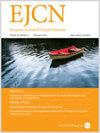Restoration of gut microbiota with a specific synbiotic-containing infant formula in healthy Chinese infants born by cesarean section
IF 3.3
3区 医学
Q2 NUTRITION & DIETETICS
引用次数: 0
Abstract
Birth by cesarean section (C-section) is associated with a delayed colonization of bifidobacteria and Bacteroidota species with potential negative health consequences. Previously, an infant formula with a synbiotic mixture of short-chain galacto-oligosaccharides and long-chain fructo-oligosaccharides (scGOS/lcFOS [9:1]) and Bifidobacterium breve M-16V was found to restore the timely colonization of bifidobacteria in C-section born infants. In this study, we investigated the effect of this synbiotic mixture on gut microbiota development in C-section and vaginally–born infants participating in a growth equivalence trial (NCT03520764). Healthy, fully formula-fed Chinese infants were randomized to receive a partially hydrolyzed whey-based protein formula with the synbiotic mixture (n = 112), or an intact protein formula with scGOS/lcFOS (prebiotic, n = 112). Breastfed infants served as reference group (n = 60). Gut microbiota profiling by 16S rRNA gene sequencing of stools collected at baseline, 17 weeks (end of intervention) and 12 months of age was complemented with analysis of stool pH, short-chain fatty acids, lactic acids, and secretory IgA concentrations. Both the prebiotic and the synbiotic formula supported a dominant and diverse infant-type bifidobacterial community, but with increased abundance of Bifidobacterium breve in the synbiotic group. In C-section born infants (54.8% of randomized) the synbiotic but not the prebiotic, enhanced the bifidobacterial species diversity and showed restoration of Parabacteroides at 17 weeks, and Bacteroides spp. at 12 months closer to that of the vaginally–born infants. The synbiotic was confirmed to support the restoration of important gut colonizers in infants born by C-section with effects observed even beyond the intervention period.

特定含合成菌配方奶粉对剖宫产健康婴儿肠道菌群的修复作用
背景:剖宫产(c -剖宫产)与双歧杆菌和拟杆菌群的延迟定植有关,具有潜在的负面健康后果。此前研究发现,一种含有短链半乳糖低聚糖和长链果寡糖(scGOS/lcFOS[9:1])与短双歧杆菌M-16V的合成混合物的婴儿配方奶粉可以恢复双歧杆菌在剖腹产出生婴儿体内的及时定植。在这项研究中,我们研究了这种合成混合物对参加生长等效试验(NCT03520764)的剖腹产和顺产婴儿肠道微生物群发育的影响。方法:健康的全配方奶粉喂养的中国婴儿随机接受部分水解乳清蛋白配方奶粉(n = 112)和完整蛋白配方奶粉(n = 112),其中含有scGOS/lcFOS (n = 112)。母乳喂养的婴儿作为参照组(n = 60)。通过对基线、17周(干预结束)和12个月时收集的粪便进行16S rRNA基因测序,分析肠道微生物群,并分析粪便pH值、短链脂肪酸、乳酸和分泌IgA浓度。结果:益生元和合成配方均支持一个优势的、多样化的婴儿型双歧杆菌群落,但合成组的短双歧杆菌丰度增加。在剖腹产出生的婴儿(54.8%)中,合成菌而非益生元增强了双歧杆菌的种类多样性,并在17周时恢复了副杆菌,在12个月时恢复了拟杆菌,更接近于阴道出生的婴儿。结论:证实了该益生菌支持剖腹产婴儿重要肠道定植菌的修复,其效果甚至在干预期后仍可观察到。
本文章由计算机程序翻译,如有差异,请以英文原文为准。
求助全文
约1分钟内获得全文
求助全文
来源期刊
CiteScore
10.60
自引率
2.10%
发文量
189
审稿时长
3-6 weeks
期刊介绍:
The European Journal of Clinical Nutrition (EJCN) is an international, peer-reviewed journal covering all aspects of human and clinical nutrition. The journal welcomes original research, reviews, case reports and brief communications based on clinical, metabolic and epidemiological studies that describe methodologies, mechanisms, associations and benefits of nutritional interventions for clinical disease and health promotion.
Topics of interest include but are not limited to:
Nutrition and Health (including climate and ecological aspects)
Metabolism & Metabolomics
Genomics and personalized strategies in nutrition
Nutrition during the early life cycle
Health issues and nutrition in the elderly
Phenotyping in clinical nutrition
Nutrition in acute and chronic diseases
The double burden of ''malnutrition'': Under-nutrition and Obesity
Prevention of Non Communicable Diseases (NCD)

 求助内容:
求助内容: 应助结果提醒方式:
应助结果提醒方式:


